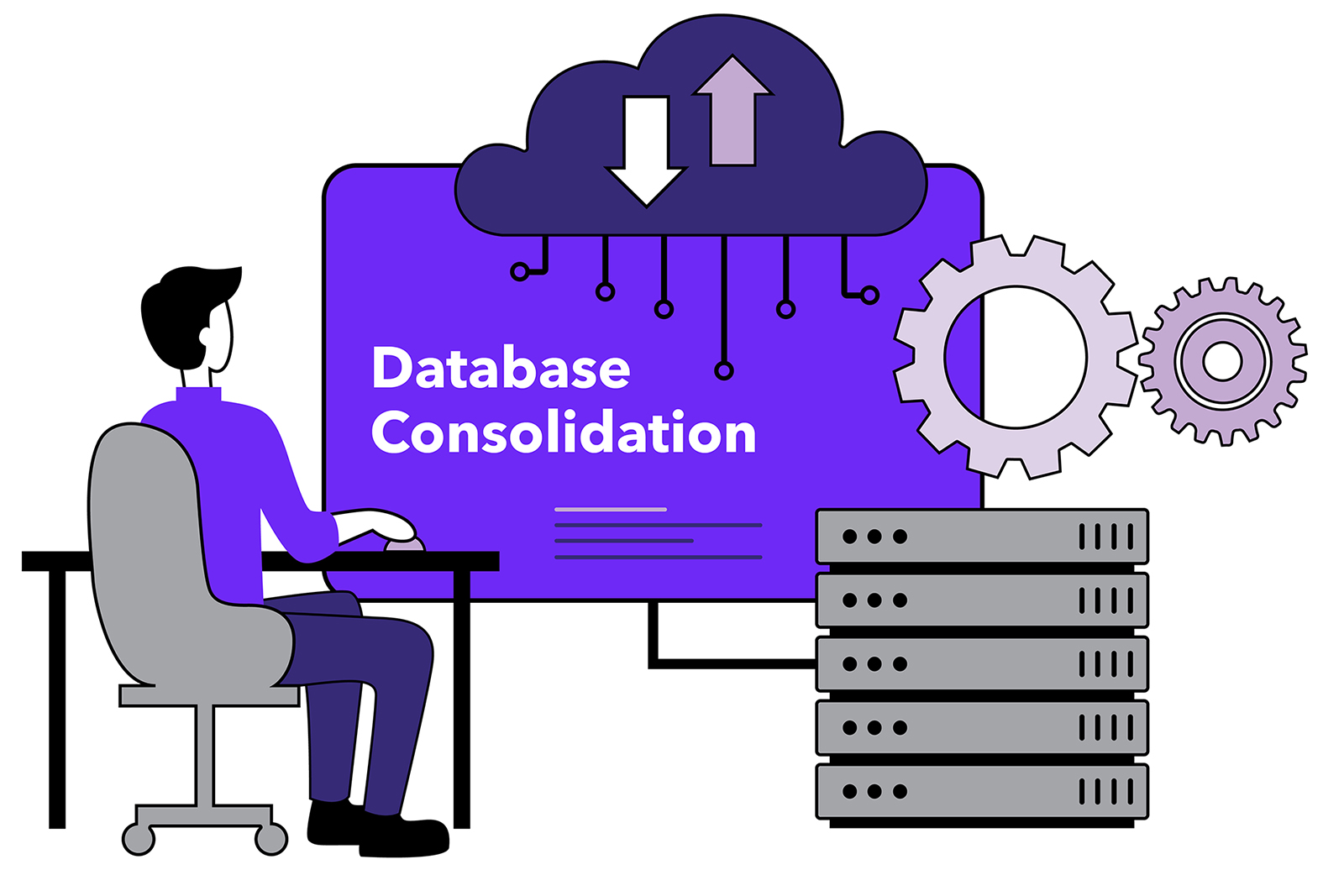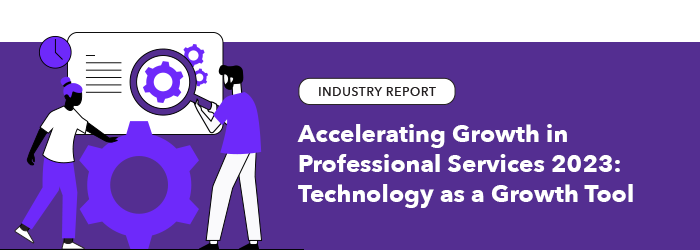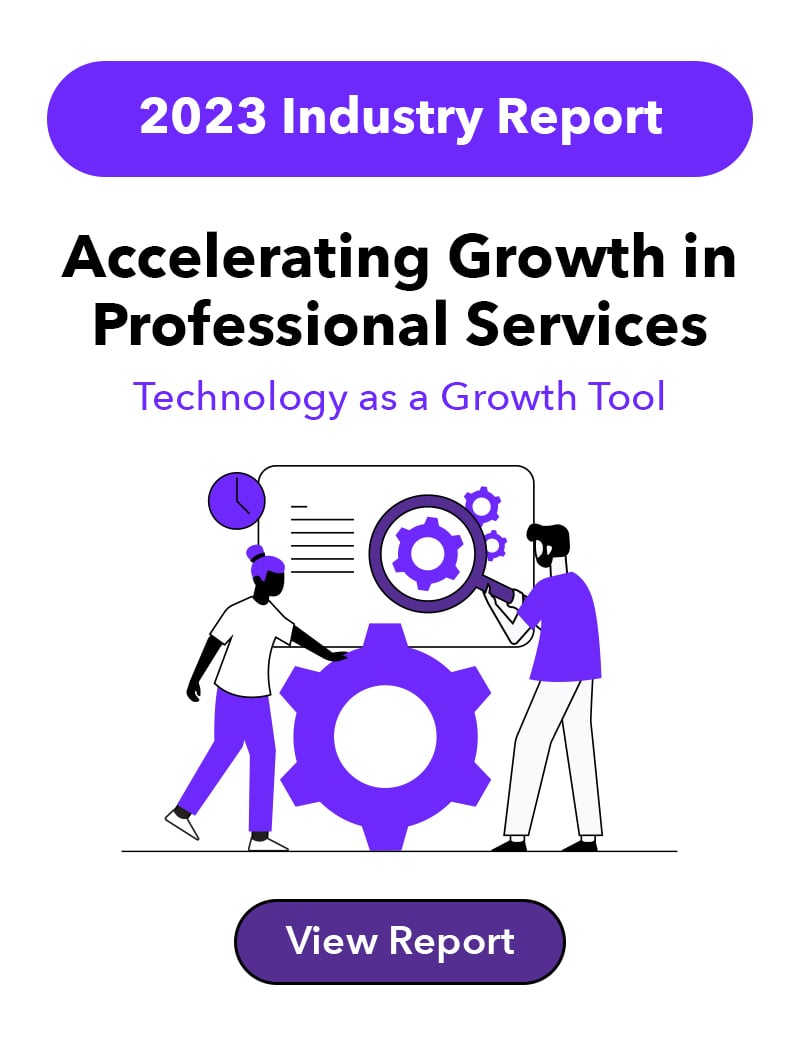Data is everything. According to McKinsey, by 2025 nearly every aspect of work will be optimized by data. This makes understanding database consolidation and its importance more relevant than ever.
When data is spread out across multiple sources, it’s harder to access, control and secure. When employees have to pull data from multiple sources, you are potentially sacrificing data quality. Not to mention valuable time.
Coveo’s 2022 Workplace Relevance Report found that workers spend an average of 3.6 hours every day searching for information at their jobs.
Those who identified as IT employees have it even worse, spending half their day (4.2 hours) looking for relevant information.
Database consolidation solves this issue.
What is database consolidation?
Database consolidation involves combining multiple data sources into a single set of computing infrastructure that’s either onsite or in the cloud, according to Oracle.
Database consolidation became common practice when better, more powerful servers came on the market. It was suddenly cheaper to buy one server with dozens of processor cores instead of multiple servers.
Remember how Microsoft launched a database consolidation device in 2011 just for the purpose of managing continuously growing data? Consider how much data has grown since then.
Statista stated that the amount of data created, captured, copied and consumed grew from 5 zettabytes in 2011 to 64.2 zettabytes in 2022 and is supposed to reach 181 zettabytes by 2025.
Data consolidation can be achieved via several different configurations, according to Oracle.
- Multiple databases on a single physical server
- Multiple databases on a single virtual machine
- Multiple databases on a cluster of physical servers
- Multiple databases on a cluster of virtual machines
Because database consolidation allows more databases to run on fewer services, your overall data infrastructure is reduced as well as operating costs.
Why Data is Important
Data is power. It drives major strategic decisions for both large and small companies – influencing long-term goals and visions, those big-picture items that help chart a company’s future. Our recent study revealed that 67% of professional services marketers/BD professionals use data to inform or support their growth strategies.
According to The Global State of Enterprise Analytics report, 56% of respondents said data analytics led to faster, more effective decision-making at their companies. And the better the data, the better a company’s analytics will be.
How companies use data
Data is the key to developing SMART goals, i.e., goals that are specific, measurable, achievable, relevant and time-bound. Information gleaned from data directs these goals. Companies can use this data:
- To make better business decisions
- To amass better market and consumer intelligence
- To enhance internal efficiencies and operations
- To anticipate patterns of consumers
- To deliver smarter services and products
How data consolidation helps achieve goals
Creating and implementing SMART goals can be a challenge if your data is of poor quality or spread out across multiple databases.
Better data gives firms insight into what their clients want, allowing them to more accurately:
- Anticipate patterns
- Make better business decisions
- Deliver smarter services
Data consolidation or data integration allows firms to use data to its greatest potential because it can be accessed quickly by everyone on the team.
And having high quality market and consumer intelligence data like demographics, buying habits and other client trends, helps firms understand their clients, allowing them to retain more customers. Firms that retain more clients save money as it’s less expensive than attracting new ones by about 60-70%.
How inaction of database consolidation sabotages goals
Without database consolidation, you aren’t taking full advantage of the data you already have, ultimately sabotaging your firm’s long- and short-term goals.
Here are the tangible ways disparate data can negatively impact your firm.
You’re drawing the wrong conclusions because you don’t have the full picture
Without database consolidation, your teams are likely working in silos.
A data silo is a group of raw data that is accessible by one department but isolated from the rest of that organization, resulting in a severe lack of transparency, efficiency and trust, according to HubSpot.
Database consolidation makes data more easily accessible, enhancing decision making.
Your data has quality and security issues
Data consolidation helps firms better govern their data, improving security.
Data governance, or the process of managing the availability, usability, integrity and security of data, ensure your data is consistent and trustworthy. It’s a key part of compliance, and that’s why it’s important to establish infrastructure, policies and procedures that safeguard your data.
Database consolidation also allows firms to minimize risks like data breaches by limiting access to certain types of data.
Putting one person or team in charge of your data ensures it remains high-quality. If everyone has access to inputting and changing data, mistakes and errors can happen, ultimately degrading your data.
You’re spending too much money managing databases
Understanding your cash flow and bottom line allows you to focus on what strategic goals you can achieve now and later on.
Maintaining multiple databases just isn’t cost effective.
According to Oracle, cost reduction is the primary business driver of database consolidation. An organization also saves money on related items such as real estate, software licenses and administrative costs.
You’re spending too much time looking for data
You can’t enhance internal operations if your team is spending too much time searching through multiple databases.
Database consolidation can help automate your data retrieval processes so information is found and used more effectively, saving both time and money.
One survey found that 60% of respondents estimate they’d save at least six hours each week if repetitive tasks were automated.
For a firm that bills by the hour, six hours per employee per week quickly adds up.
Challenges with database consolidation
- Limited staff. Data consolidation may require the expertise of outside staff members, like engineers and code writers. If you don’t already have staff members with these skills, you’ll have to hire a contractor to help you with the consolidation process.
- Quickly outgrowing solutions. One of the challenges of data consolidation is choosing a solution that you won’t quickly outgrow. If you don’t choose a solution that can grow with you, you’ll end up spending more than you need to in the long run.
- Incompatible data types. If your data has been siloed for a while or stored on legacy machines, you likely have multiple formats to consolidate. This requires extra expertise and possibly expense to consolidate it properly.
Companies to assist in database consolidation
Working with a company that is skilled in data consolidation efforts helps to ease some of these core challenges.
The following organizations are some of the best data consolidation solutions in the market:
- Microsoft SQL Server Integration Services. For those with a SQL Server, Microsoft offers SQL Server Integration Services, which is part of SQL Server setup.
- Oracle. Oracle also offers guidance on how to consolidate onto Exadata, Exadata Cloud@Customer, or Exadata Cloud Service.
Other software companies help firms with data integration, taking the data they already have and making it more accessible.
- Zapier. Zapier is a data integration tool that connects apps and routes your data into one centralized place. It automates workflows and moves data across 5,000-plus apps.
- Pitchly. Pitchly’s data enablement platform brings people, data and content together to make work more accurate, efficient and scalable. Pitchly consolidates data into one user-friendly platform. With Pitchly, firms can easily manage their data, ensuring everyone is on the same page. Watch this video to see how Pitchly works.
When you consolidate data, you put the power of improved decision-making in the hands of every employee, increasing your ability to win more clients and achieve your strategic goals.
And while database consolidation is something every company will likely have to deal with in the next five years, there are challenges to be aware of. Trusted partners can help untangle your multiple webs of data. Pitchly is one of those partners. Our data management strategies help firms enable their data.
Subscribe to our blog or download our new eBook, Data Enablement 101, to get the full picture of what data enablement is, the best strategies, and what to look for in enablement tools.
 Feb 7, 2023
Feb 7, 2023





